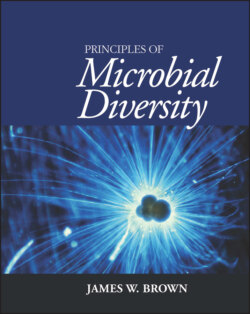Читать книгу Principles of Microbial Diversity - James W. Brown - Страница 45
Deciding which organisms to include
ОглавлениеUsually, deciding which organisms to include is part of the treeing process rather than something done in advance. As is explained in chapter 4, most often you start out by generating a tree with representatives from a wide range of organisms scattered around the tree in order to identify what kind of organism it is in very general terms, and then you replace most of these disparate representatives with representatives that you now know are likely to be closely related. The resulting tree gives you more specific information about the group to which your organism belongs, which can be used again to choose even closer relatives, and so on until you are satisfied with the representation of the tree. For example, if you have a new organism to identify, an initial tree containing one or two representatives from each bacterial phylum might show you that your organism is a member of the Firmicutes. With this information in hand, a second tree populated by representatives of each order and family of Firmicutes might show you that you might have a member of the family Veillonellaceae. From there, you could populate a final tree with most of the species in this family.
